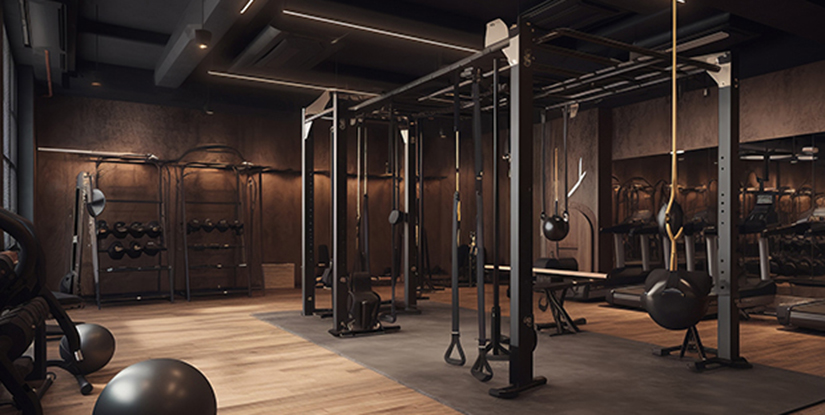Outdoor Fitness Equipment Guide — Design, Selection, Installation

Why Invest in Outdoor Fitness Equipment
Outdoor fitness equipment transforms public spaces into active, health-promoting environments. Municipalities, schools, apartment complexes, and private developers increasingly prioritize outdoor gyms and park fitness zones to encourage accessible, low-cost exercise. Properly selected and sited equipment supports cardiovascular health, strength training, balance, and mobility for diverse age groups.
Health and Social Benefits
Outdoor fitness installations provide free access to structured exercise, lowering barriers associated with gym memberships. Beyond physical benefits, outdoor fitness areas foster social interaction, community cohesion, and mental well-being through regular, shared activity. For aging populations, targeted equipment can improve functional independence and reduce fall risk.
Types of Outdoor Fitness Equipment
- Cardio Stations: Air walkers, ellipticals, and ski trainers provide low-impact aerobic options suitable for a broad range of fitness levels.
- Strength Stations: Pull-up bars, dip stations, and resistance machines enable bodyweight and mechanical resistance training outdoors.
- Flexibility & Balance: Stretch posts, balance beams, and stability platforms support mobility and proprioception work.
- Functional Training Areas: Calisthenics parks, obstacle circuits, and multi-station rigs facilitate sport-specific and high-intensity interval workouts.
- Inclusive Equipment: Adaptive machines and low-step designs ensure access for users with limited mobility or special needs.
Selecting the Right Equipment
Selection begins with a needs assessment: define target users, budget constraints, spatial limitations, and maintenance capacity. Prioritize durable materials such as galvanized steel with powder coatings, UV-stable plastics, and stainless fasteners to withstand weather and vandalism. Modular designs enable staged installations and future expansion.
Siting, Surface, and Accessibility
Choose high-visibility locations near trails, playgrounds, or community centers to maximize use. Provide safe surfacing—rubber tiles, poured-in-place systems, or compacted gravel—to reduce injury risk and meet accessibility guidelines. Ensure pathways, signage, and clear sightlines comply with ADA principles and local planning regulations.
Installation and Maintenance Best Practices
Professional installation ensures equipment stability and warranty compliance. Establish a maintenance schedule that includes routine inspections, lubrication of moving parts, tightness checks of fixings, and surface repairs. Document inspections and respond swiftly to safety hazards. Consider anti-graffiti coatings and tamper-resistant fittings for longevity.
Safety and User Education
Visible instructional signage with concise usage steps, recommended repetitions, and contraindications reduces misuse and injury. Offer QR codes linking to demonstration videos and programming suggestions for different fitness levels. Implement lighting and wayfinding for early morning and evening use, and integrate emergency access plans for urban sites.
Designing for Community Impact
Engage stakeholders during planning—residents, schools, and healthcare providers—to align features with community needs. Combine outdoor fitness with walking loops, seating, shade structures, and hydration stations to create inclusive wellness destinations. Measure impact through surveys, usage counters, and health partnership initiatives to justify ongoing investment.
Cost Considerations and Funding
Costs vary widely based on equipment type, surface, and installation complexity. Explore mixed funding approaches: municipal budgets, grants, corporate sponsorships, and community fundraisers. Prioritize high-impact, low-maintenance pieces when budgets are constrained, and plan phased rollouts to distribute costs over time.
Conclusion
Outdoor fitness equipment is an effective, scalable strategy to promote public health and strengthen communities. Thoughtful selection, professional installation, and proactive maintenance create durable, safe, and welcoming fitness environments. By prioritizing inclusivity and evidence-based design, planners and operators can maximize return on investment and deliver lasting community benefits.
FAQs
- What is outdoor fitness equipment? — Durable exercise stations designed for public outdoor use to support cardio, strength, and flexibility.
- Who benefits from outdoor fitness zones? — Residents of all ages, from children to seniors, including people seeking low-cost exercise options.
- How long does equipment last? — With quality materials and maintenance, life expectancy ranges from 10 to 20+ years.
- What surface is best? — Rubber tiles or poured-in-place surfaces balance safety and accessibility.
- Are outdoor gyms ADA-compliant? — Many designs meet ADA guidelines when sited with accessible routes and clear space.
- How much does installation cost? — Costs vary; basic installations can be modest while full circuits with surfacing require larger budgets.
- How often should maintenance occur? — Monthly visual checks and annual detailed inspections are recommended.
- Can equipment withstand vandalism? — Anti-vandal designs and durable finishes reduce damage and maintenance needs.
- How to fund a project? — Combine public funds, grants, sponsors, and community contributions for feasible financing.

